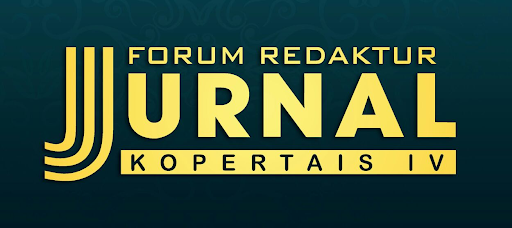PENGARUH MEDIA AUDIO VISUAL TERHADAP MAHARAH AL-KITABAH
Abstract
This research to find out if audio visual media to writing skills in grade V students Mi Miftahul Ulum The use of audio visual media has a very important role that is: can provide many benefits as long as teachers play an important role in the learning process, in the study more focused on learning Arabic language in class V MI Miftahul Ulum researchers use case studies of the influence of audio visual media in maharoh kitabah which currently uses audio visual as a learning medium, in use of course there is a very good influence and not in arabic language learning. And can be seen from the average value of maharoh kitabah using Audio Visual learning media in grade V, maximal values reached 90 while the average class V was 77.4 while based on thitung = 2,552and ttabel at ά= 5% and dF= 25 = 0.413 therefore t count ≥ t table this indicates that 2,552 ≥ 0.413.
Downloads
References
Arsyad, Azhar. 2011. Media Pembelajaran. Jakarta: PT Rajagrafindo Persada.
Broto, A.S. 1980. Pengajaran Bahasa Indonesia sebagai Bahasa Kedua di Sekolah Dasar Berdasarkan Pendekatan Linguistik Kontrastif. Jakarta : Bulan Bintang.
Munadi, Yudhi. 2013. Media Pembelajaran. Jakarta: Refrensi GP Press Group
Musfiqon. 2012. Pengembangan Media & Sumber Pembelajaran. Jakarta: Prestasi Pustaka Publisher
Mustofa, Syaiful. 2017. Strategi Pembelajaran Bahasa Arab Inovatif. Malang: UIN Press.
Mustofa, Bisri. & M. Abdul Hamid. 2016. Metode dan Strategi Pembelajaran Bahasa Arab. Malang: UIN Maliki Press.
Nazir, Moh. Metode Penelitian. Bogor: Ghalia Indonesia
Sugiyono. 2015. Metode Penelitian Kuantitatif,kualitatif dan R&D Cet. 22. Bandung: Alfabeta.
Copyright (c) 2021 Lahjah Arabiyah: Jurnal Bahasa Arab dan Pendidikan Bahasa Arab

This work is licensed under a Creative Commons Attribution-ShareAlike 4.0 International License.
Authors who publish with this journal agree to the following terms:
- Authors retain copyright and grant the journal right of first publication with the work simultaneously licensed under a Creative Commons Attribution-ShareAlike 4.0 International License that allows others to share the work with an acknowledgement of the work's authorship and initial publication in this journal.
- Authors are able to enter into separate, additional contractual arrangements for the non-exclusive distribution of the journal's published version of the work (e.g., post it to an institutional repository or publish it in a book), with an acknowledgement of its initial publication in this journal.
- Authors are permitted and encouraged to post their work online (e.g., in institutional repositories or on their website) prior to and during the submission process, as it can lead to productive exchanges, as well as earlier and greater citation of published work.



























_by_Matematohir.jpg)


